Have your influencer campaigns stopped performing? Wondering how to find and amplify engaging user-generated content (UGC)?
In this article, you’ll discover the types of UGC that work for marketers right now.
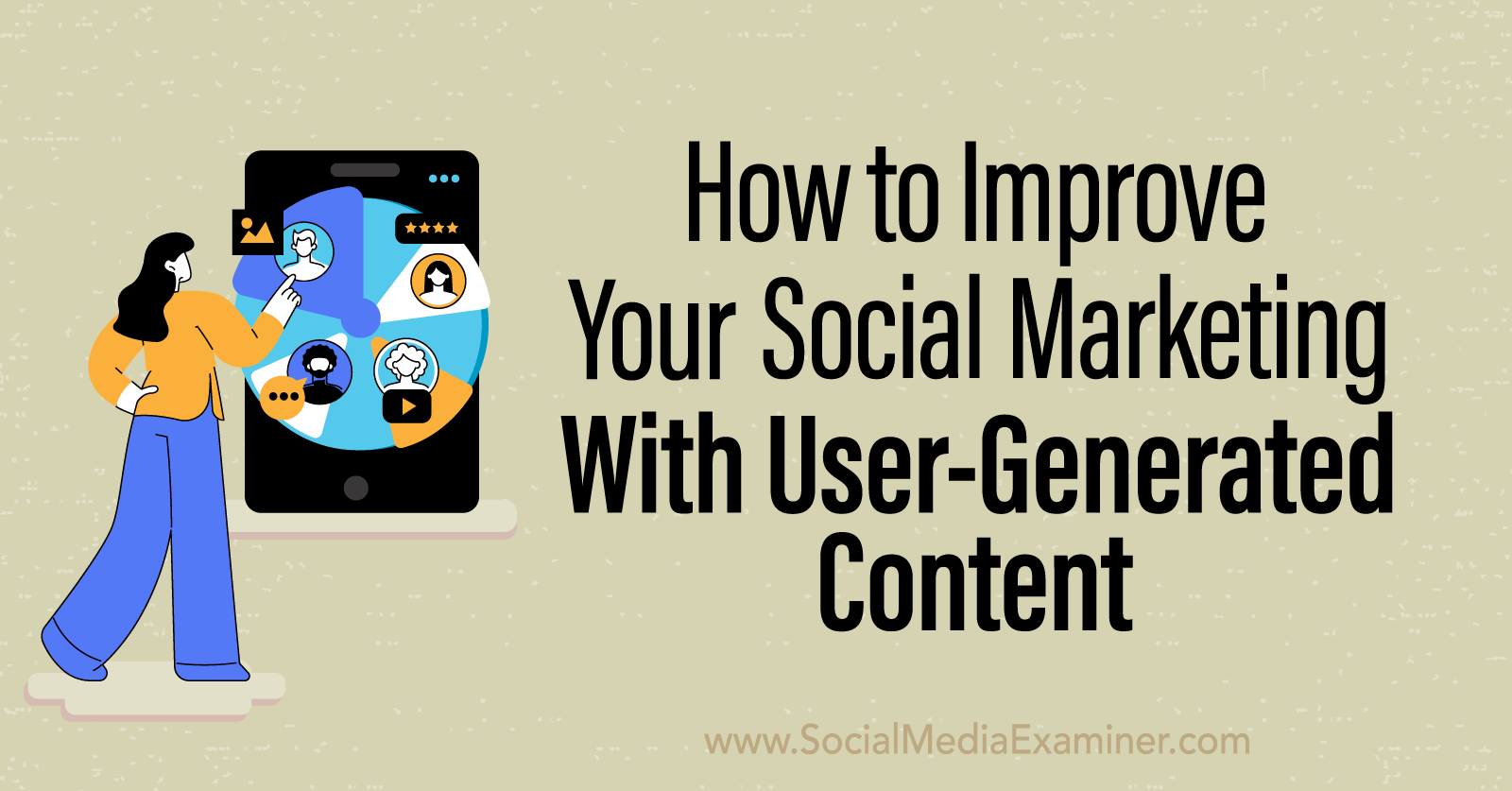
How to Source UGC for Social Media Marketing Strategy
The best way to find UGC depends on the social platforms your customers typically use. Are they scattered across multiple social media platforms? If so, a third-party social media dashboard is the most efficient option for locating UGC across channels. Most automatically collect mentions and tags in a single tab so you can manage UGC easily.
However, you can always use native tools to spot UGC on an individual social media platform. For example, Meta Business Suite consolidates UGC from your linked Facebook and Instagram pages on the Mentions & Tags tab. In most other social media apps, you can find UGC by checking notifications and tags or by searching for your branded and campaign hashtags.
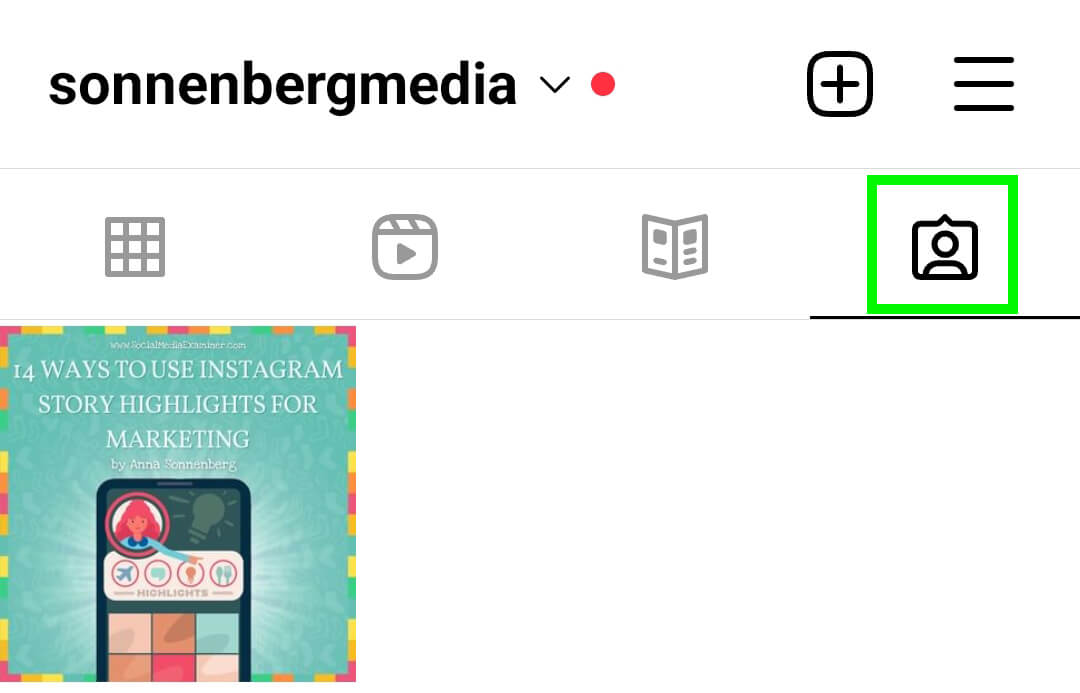
How to Organize UGC for Your Social Media Strategy
Below, we’ll cover strategies for sharing UGC. But before you get to that point, make sure to save and document the content. It’s typically best to save UGC both on- and off-platform so you can easily access the original content and share it with your team.
To save social media content natively, create a UGC swipe file for each platform. For example, you can use Twitter bookmarks and Instagram saves to keep content handy. With a social network like Facebook, you can create an organizational system that works for you and save UGC in its own dedicated folder.
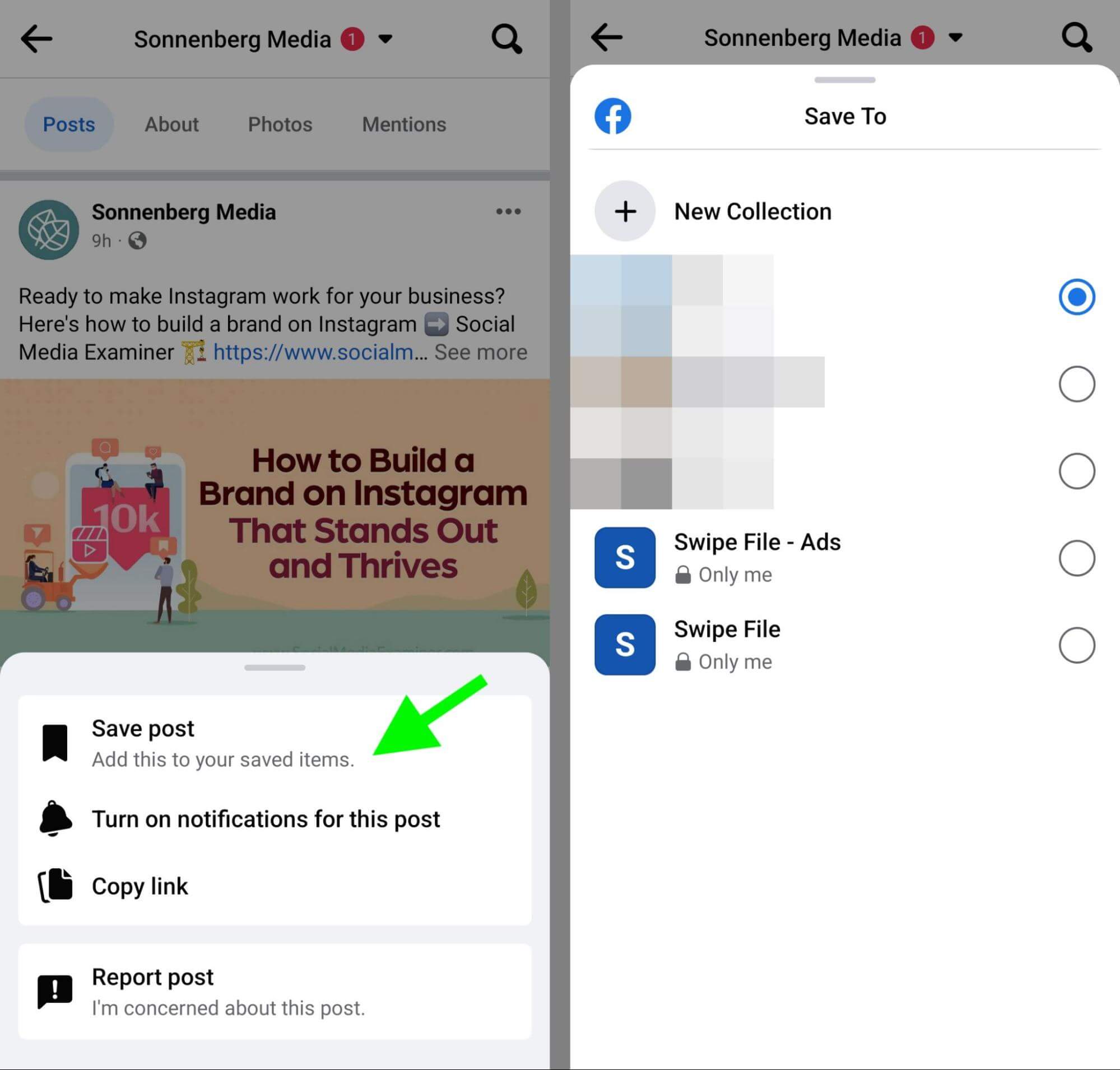
To consolidate all UGC from across social media channels, create a simple database where you can track it. For example, Google Sheets and Airtable work well for building basic UGC lists. They can easily track the link to the original post, the creator’s handle, a screenshot of the original post, and any other helpful details.
You can also use your UGC database to brainstorm captions and other elements to add when you share the UGC. You may also want to add notes about when to include each post in your content calendar, as you may want to work it into a marketing campaign.
How to Get Permission to Share UGC In Your Social Media Marketing Efforts
Unless you use in-app sharing tools to repost UGC (see below), it’s crucial to get permission to publish UGC. After all, the content belongs to the original creator. Depending on the methods you use to source UGC, you can get permission before the creator submits the content or after you source it.
If you run a hashtag campaign or a UGC contest, it’s easiest to confirm permission before creators submit content. You can do that by clarifying the terms on your social profile or by linking out to a landing page that details how you’ll use the images or videos.
If you find UGC in your mentions or notifications, you’ll need to ask for permission directly. It’s often simplest to do that by commenting on the post or sending the customer a DM. Thank them for featuring your brand and ask for permission to post the content to your feed.
Types of UGC to Promote Now
Now you know how to source and organize fan- and customer-created content. Next, let’s explore the different types of UGC so you can find one that appeals to your target audience.
Lifestyle Content
As one of the most common types of UGC, lifestyle content may account for a large percentage of your brand’s tags and mentions. This kind of content shows your product or service in action and may include brief commentary from the creator. Lifestyle content is great for sharing since it’s usually positive and shows your brand in a real way.
In the Facebook post below, @counterculturecoffee shares two lifestyle posts that show the brand’s coffee in a natural home setting. The brand keeps the caption minimal, tagging the creator and using the name of the coffee to create a catchy call to action (CTA).
Get World-Class Marketing Training — All Year Long!
Are you facing doubt, uncertainty, or overwhelm? The Social Media Marketing Society can help.
Each month, you’ll receive training from trusted marketing experts, covering everything from AI to organic social marketing. When you join, you’ll also get immediate access to:
- A library of 100+ marketing trainings
- A community of like-minded marketers
- Monthly online community meetups
- Relevant news and trends updates
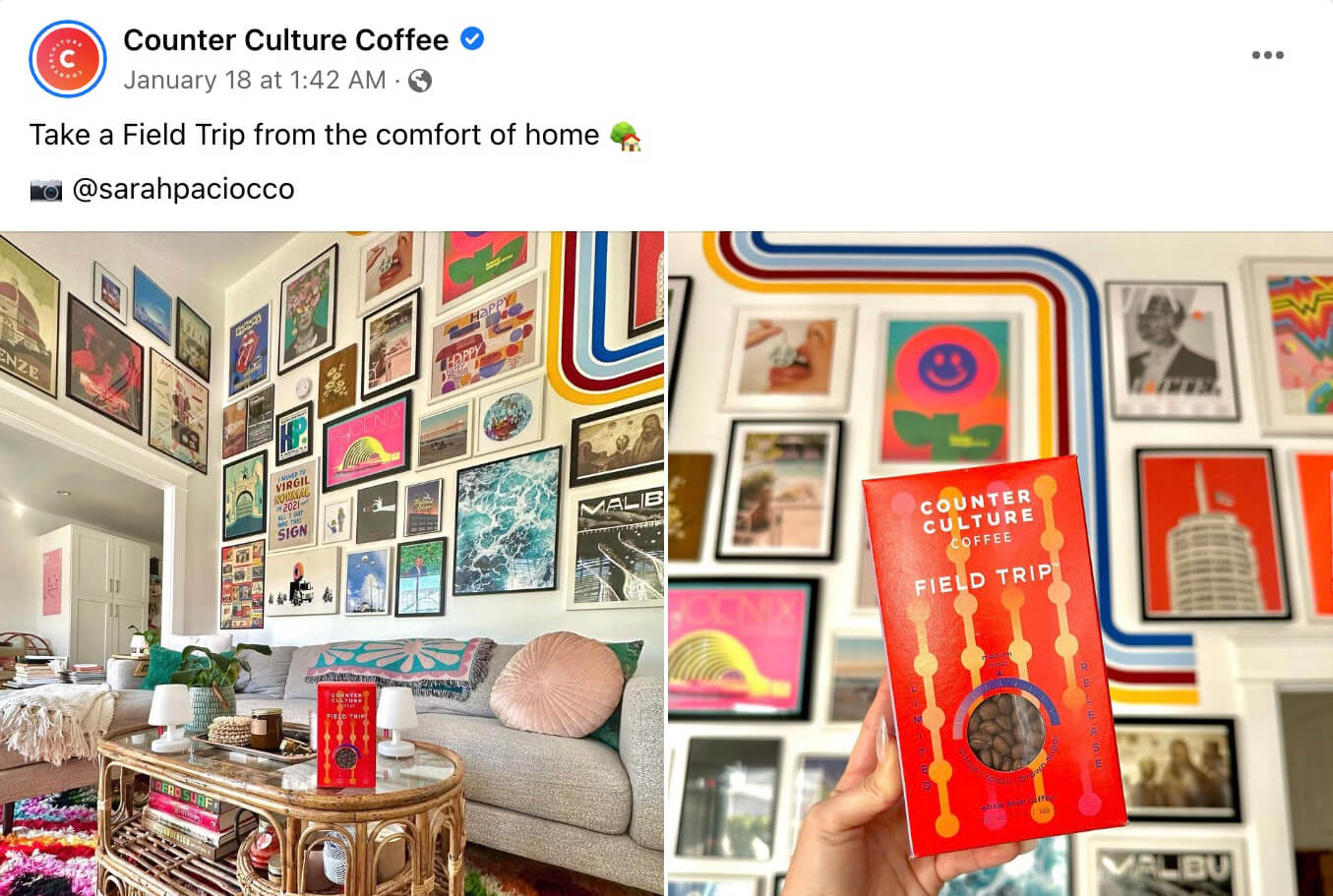
How-To Content
Are your products challenging to use or master? Do your customers get creative with how they use, make, or style your products? Customer-created how-to content can be just as effective as the videos and graphics your team makes in-house.
For example, how-to UGC might reveal simple hacks that help customers use your services more effectively. This kind of UGC might also show an advanced way to use your products, appealing to long-time customers. Although most how-to UGC is genuinely helpful, some might serve as an example of what not to do—which can be just as engaging.
Unboxing Videos
Does your brand have distinctive packaging that’s a point of pride for your team? Do you want new customers to get excited about opening one of your packages or inspire existing customers to make a repeat purchase? Unboxing videos are great for capturing the excitement of opening a new product.
In the Instagram story highlight below, @ftlofshop shares two unboxing reels from customers. Both show the care that goes into the packaging and capture the customers’ excitement. By keeping these shared reels in story highlights, the jewelry shop can continue to use them to inspire new customers.
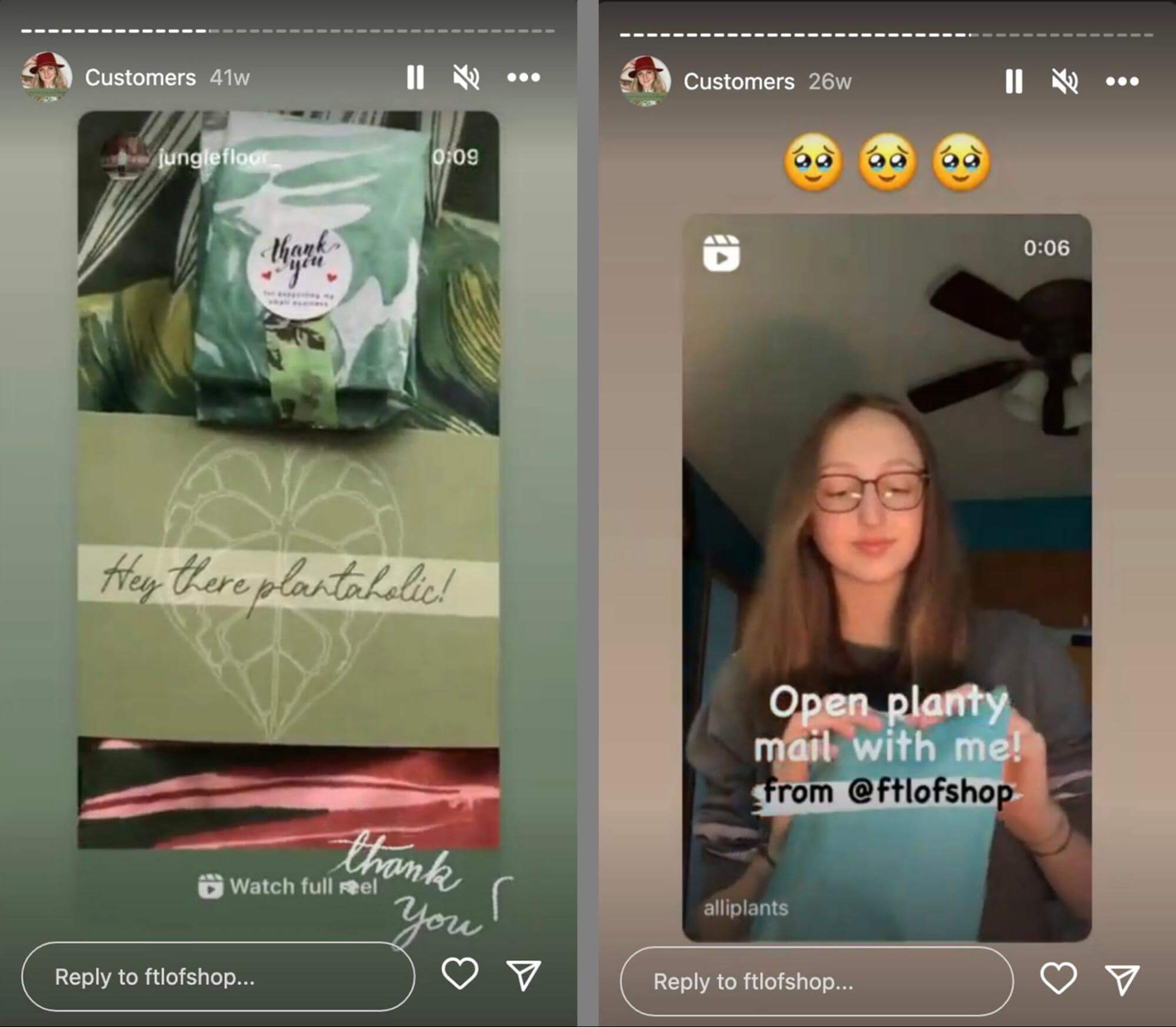
Branded and Campaign Hashtags
If you want to make it as easy as possible for customers to tag your brand in UGC posts, create a branded hashtag. Make sure it’s unique so unrelated content won’t get mixed in with your customers’ UGC. Then list it in your social profiles so customers can easily find and use it.
To encourage customers to create content on more specific topics, create a hashtag campaign. Once again, make sure it’s unique to keep the hashtag feed clean. Then promote the hashtag campaign in organic or paid content, prompting customers to use it. Check the hashtag feed regularly to find campaign content and confirm permission before sharing.
Themed UGC Contests
Although unique hashtags often work well for running UGC campaigns and sourcing customer-created content, they aren’t your only option. With UGC contests, you can encourage customers to create and submit content that fits specific parameters. Then offer a compelling prize to improve participation.
It’s typically easiest to run UGC campaigns through external landing pages, even if the content comes from social media. With a separate landing page, you can outline the terms clearly and collect UGC efficiently without having to scroll through hashtag feeds. This method can also make it easier to select winners and award prizes.
Reviews and Testimonials
UGC doesn’t always have to be visual. Quotes from customer reviews or testimonials can also resonate with your followers. So can screen grabs of some of your funniest or most flattering customer mentions.
As an example, the @Jotform tweet below features a tweet from a happy customer. It’s short and to the point, succinctly sharing why the customer likes the online form builder and how they use it. In the caption, @Jotform adds a brief CTA prompting customers to share their own reasons for using the software.

Discover Proven Marketing Strategies and Tips
Want to go even deeper with your marketing? Check out the Social Media Marketing Podcast! Publishing weekly since 2012, the Social Media Marketing Podcast helps you navigate the constantly changing marketing jungle, with expert interviews from marketing pros.
But don’t let the name fool you. This show is about a lot more than just social media marketing. With over 600 episodes and millions of downloads each year, this show has been a trusted source for marketers for well over a decade.
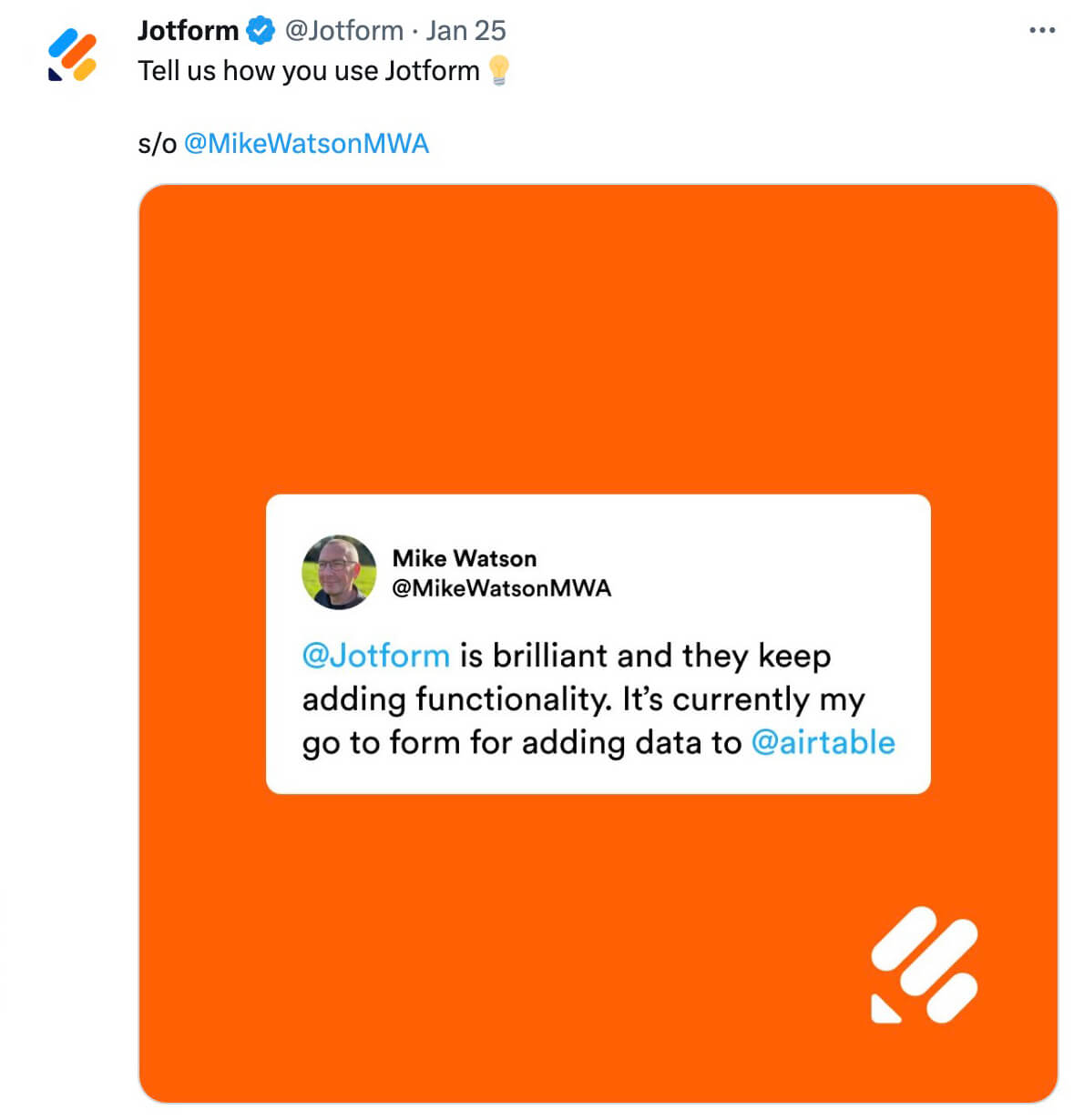
Case Studies and Customer Stories
In most cases, customers don’t create case studies or stories of their journeys completely independently. Instead, this kind of UGC-adjacent content is a partnership between brands and customers. Think of this type of content as a collaboration that shares customers’ genuine stories and experiences through the brand’s lens.
In the LinkedIn post below, Leadpages shares several stories from real customers. The video features snapshots of each customer’s website, showcasing what the landing page builder’s software can do. The caption briefly introduces each featured customer to help followers find points of connection so they can better understand how the software might help them.
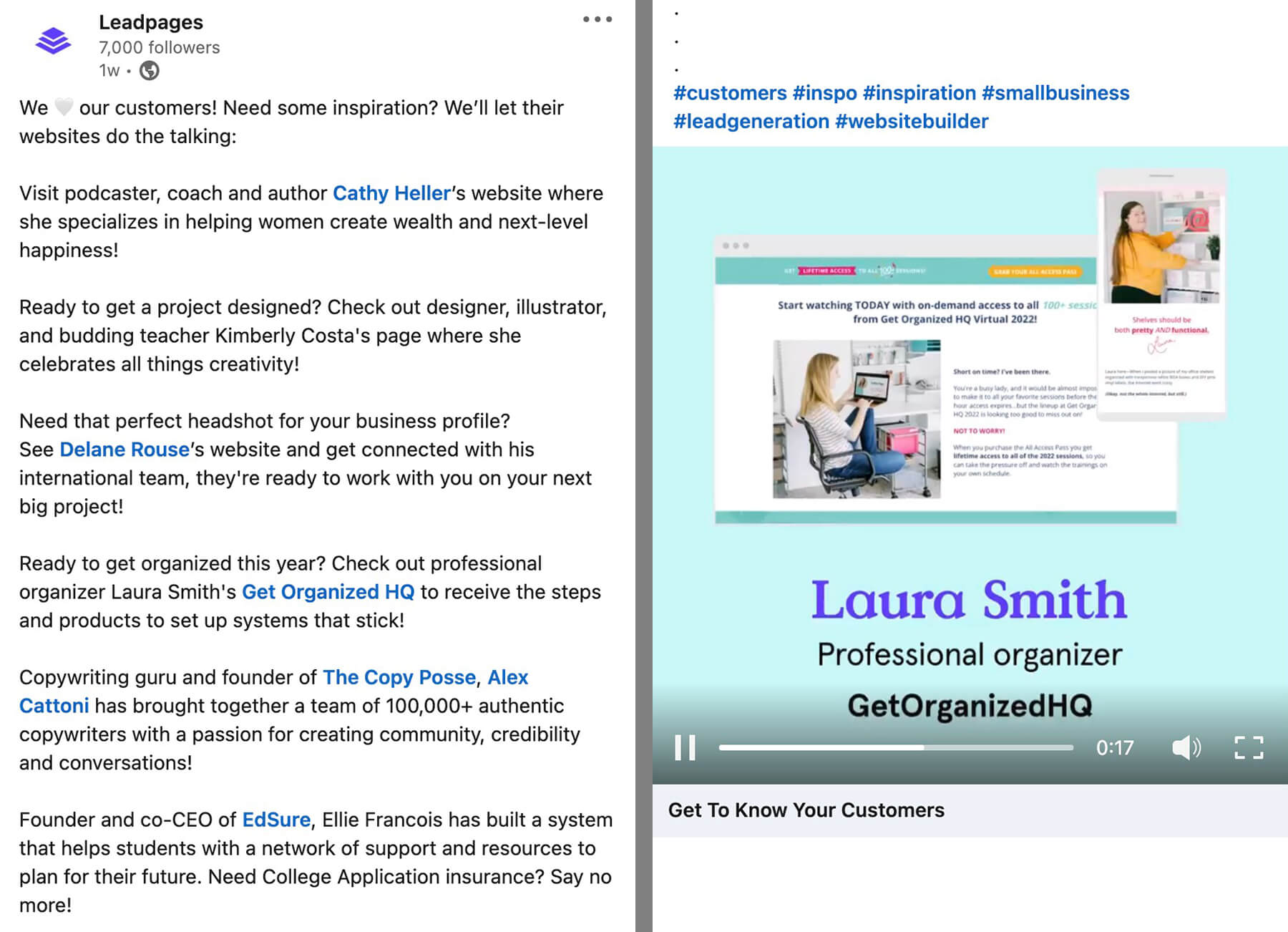
“De-Influencer” Content
If your brand has a lot of happy customers, then you’re likely to find a lot of positive UGC that raves about your brand. But you might also spot some “de-influencer” content, which does the opposite. This growing trend often features brand and product teardowns, with the creator recommending that viewers don’t purchase the item.
If you find de-influencer content featuring your brand, you have a couple of options. You could bring it to your team’s attention and consider whether the creator has valid points. Then you could respond thoughtfully and professionally in a comment or DM.
Alternatively, you could respond to the post with one of your own. By remixing this kind of UGC, you can share the original context while adding your reaction. When done in good humor, a remix can even help your brand win over new customers.
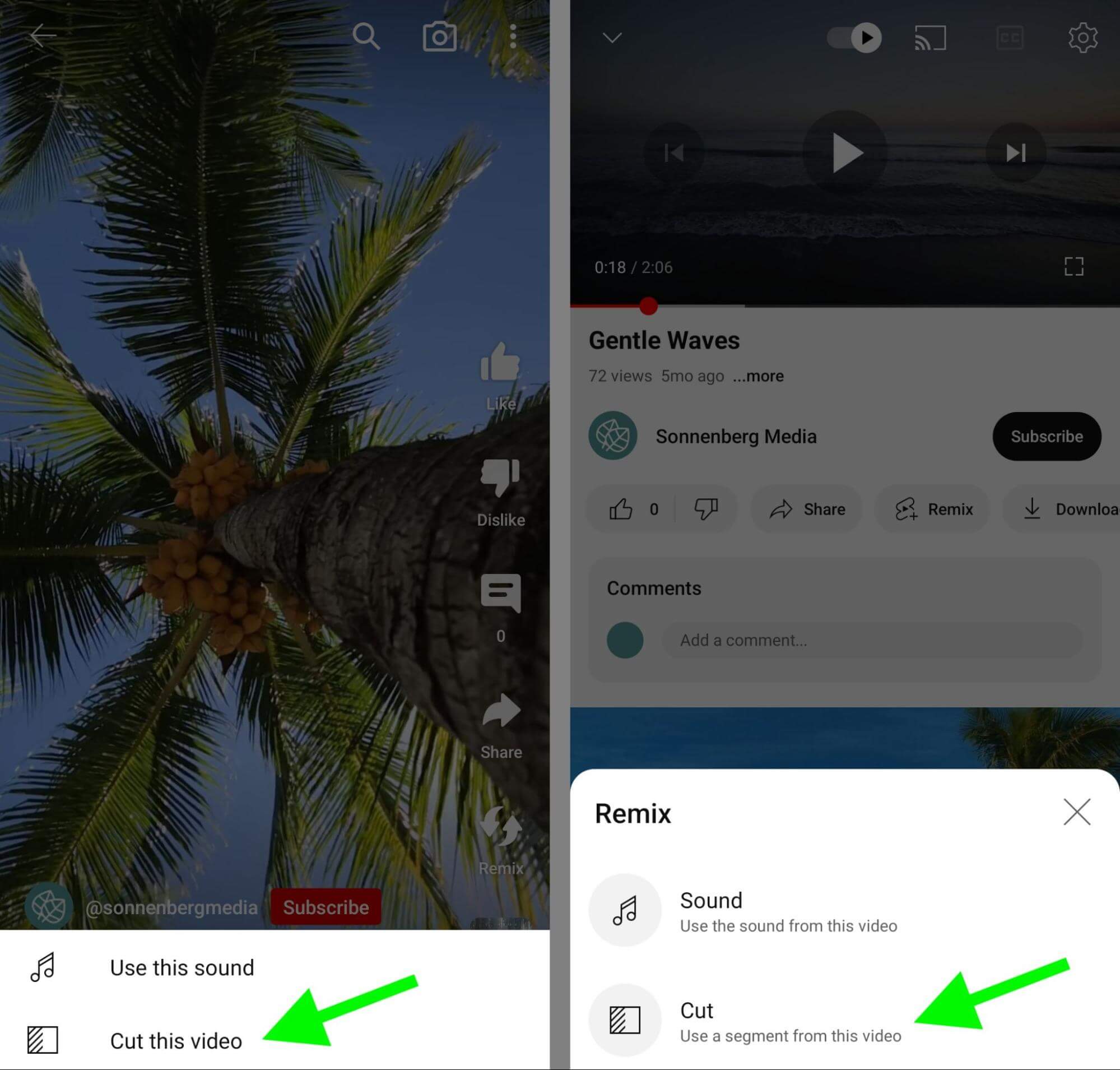
Keep in mind that you can remix many kinds of UGC, even content that doesn’t directly feature your brand. For example, you might consider remixing de-influencer content about a competitor, especially if you want to position your brand as a smart alternative.
How to Amplify UGC From Your Social Media Presence
Once you find great UGC and get permission to share, you can add it to your content calendar. Use the tips below to publish it most effectively so you can maximize the benefits from this kind of content.
Retweet, Repost, or Share Natively Across Different Social Media Platforms
The easiest way to amplify UGC is by using native tools such as retweets, reposts, or shares. In theory, you can use these tools to share UGC to your brand’s feed or Stories in a single click. But in practice, it’s usually a much better idea to add something to the conversation.
In other words, add your brand’s spin in the caption or with a sticker. Here are a few options to consider:
- Thank the original creator by tagging them in the caption or a story sticker.
- Use emojis and stickers to reflect your gratitude or reaction to the content.
- Share context to help your audience understand what they’re watching such as naming the product or clarifying where the customer purchased it.
Note that you don’t need permission to share UGC using these native tools. Since you’re resharing original content rather than uploading the content to a completely new feed post, you can safely retweet, repost, or share any UGC you like.
Remix Photos and Reels
When you want to add a reaction or provide context for UGC, using in-app remix tools can be a great way to create conversations with your customers. Remixes typically let you take a short clip from the customer’s UGC and then add your own footage in response to it. Depending on the app, the clips can display side by side or one after another.
For example, you can respond to YouTube videos and shorts by tapping the Remix button. Then you can select up to 5 seconds from the original video and film your reaction. Although you can’t edit the UGC footage, you can add text overlays to provide commentary.
On Instagram, you can remix photos and reels by placing the original content at the beginning or alongside your reaction. When you publish the remix, Instagram automatically links the original content and credits the creator.
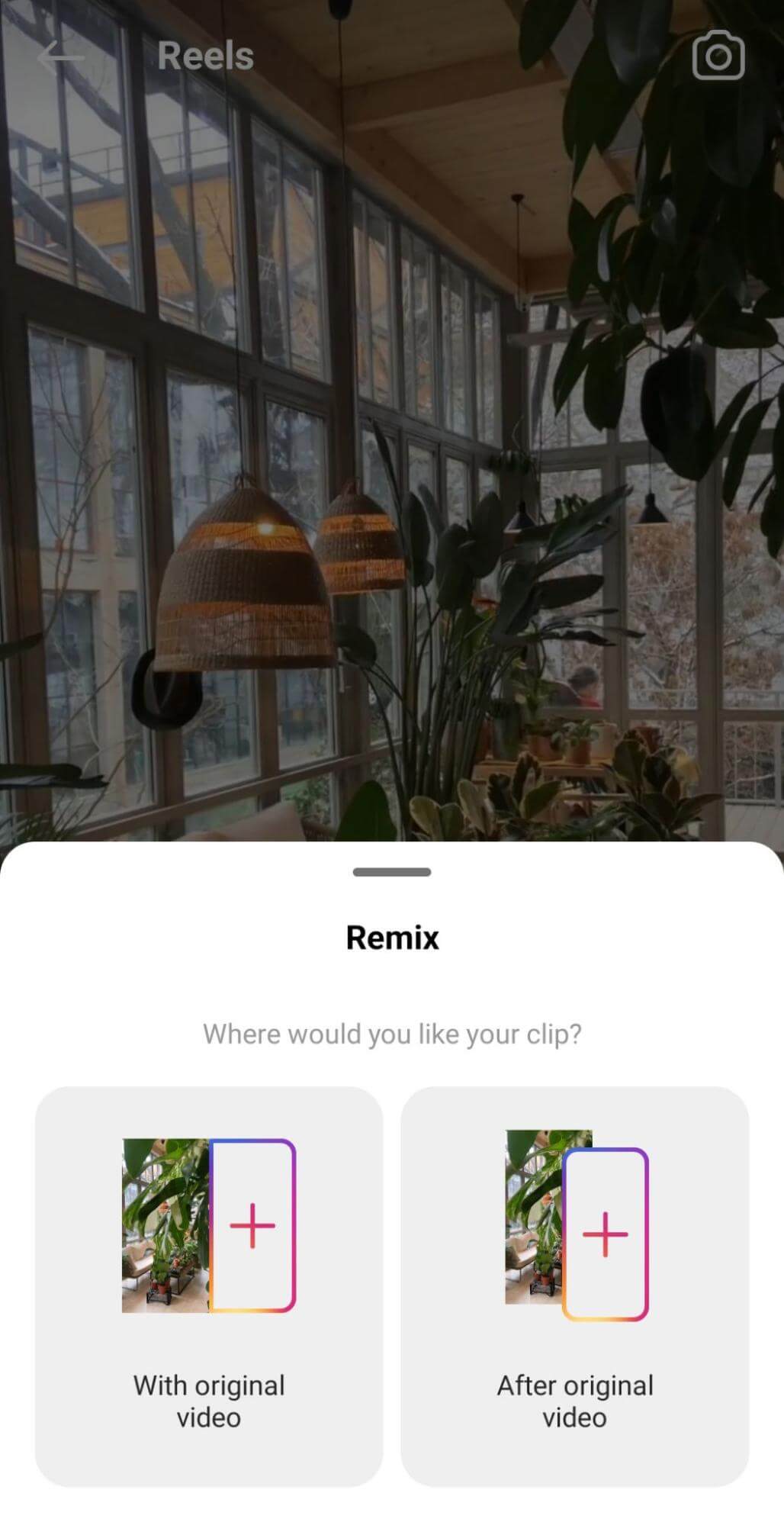
Your options on TikTok are similar. Choose from Duet, which places your video alongside the original UGC, or Stitch, which places your video after it. Like YouTube and Instagram, TikTok automatically credits and links back to the original creator’s content.
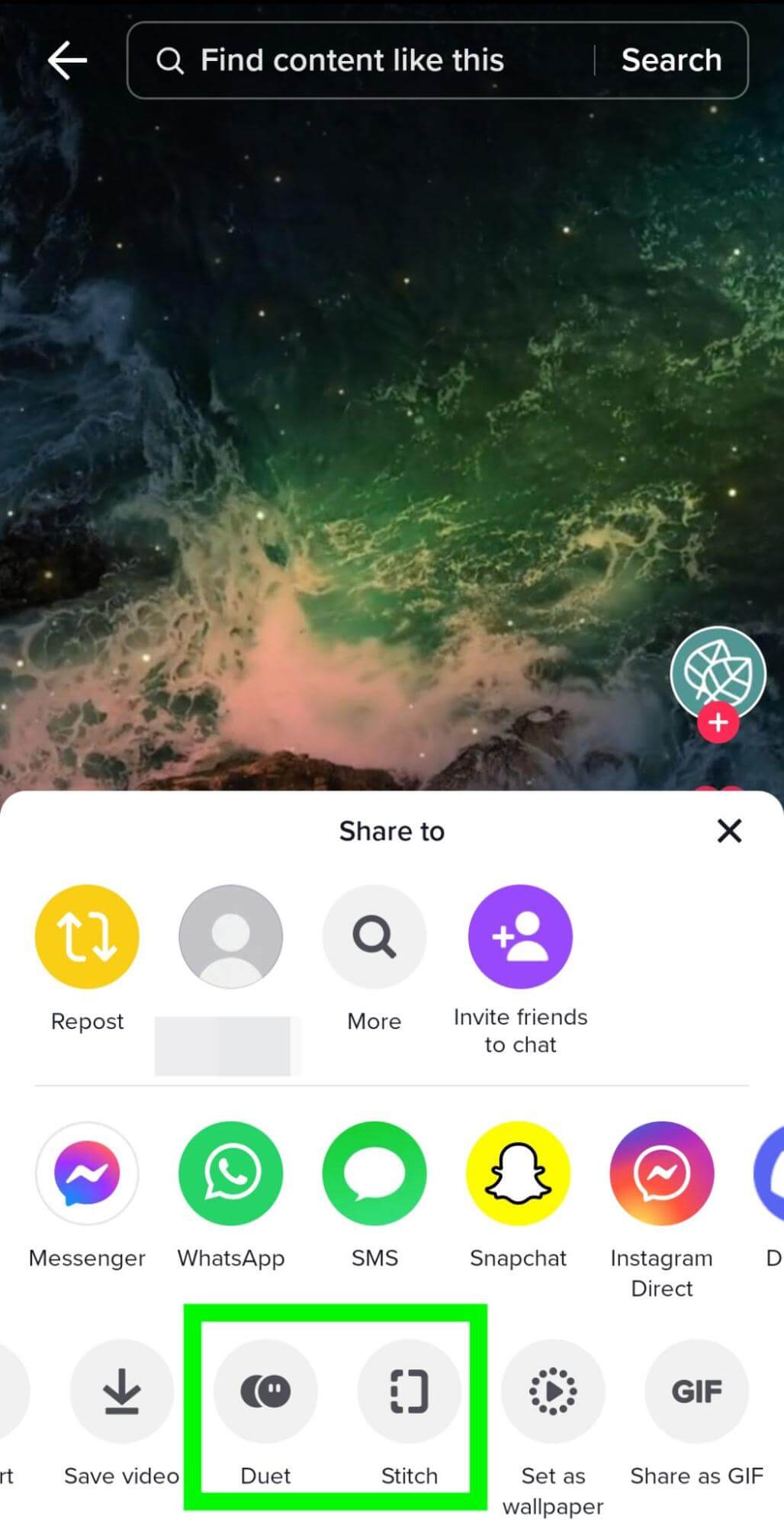
Share Organically Across Your Social Channels
Using in-app sharing tools is a great way to amplify the original post. But you also have the option to share the content to your brand’s feed, provided you have permission from the original creator.
Unless you have permission to edit the content, take care to keep the original look and format of the content intact. In other words, avoid touching up photos, trimming videos, or cutting out part of the customer’s comment.
When you share UGC organically, it’s always a good idea to thank the original creator and tag or mention them in the caption. You can add your brand’s voice to the conversation by sharing your reaction or giving some background.
In the caption, you can also add key details like where to purchase the item or how much it costs. But take care not to turn the post into a sales pitch. To keep the focus on the content and the social proof it provides, consider leaving purchase details out of the caption and responding to relevant comments and DMs individually.
Use UGC in Branded Content Ads
If they truly resonate with your audience, organic UGC shares can generate a ton of reach and engagement. To reach an even wider audience, you might consider repurposing them as ads.
Not sure when to consider paying to promote UGC? Start with your boosting guidelines and set a reach or engagement threshold for amplifying content. For example, you might consider turning an organic post into an ad if the engagement rate reaches 5% or higher.
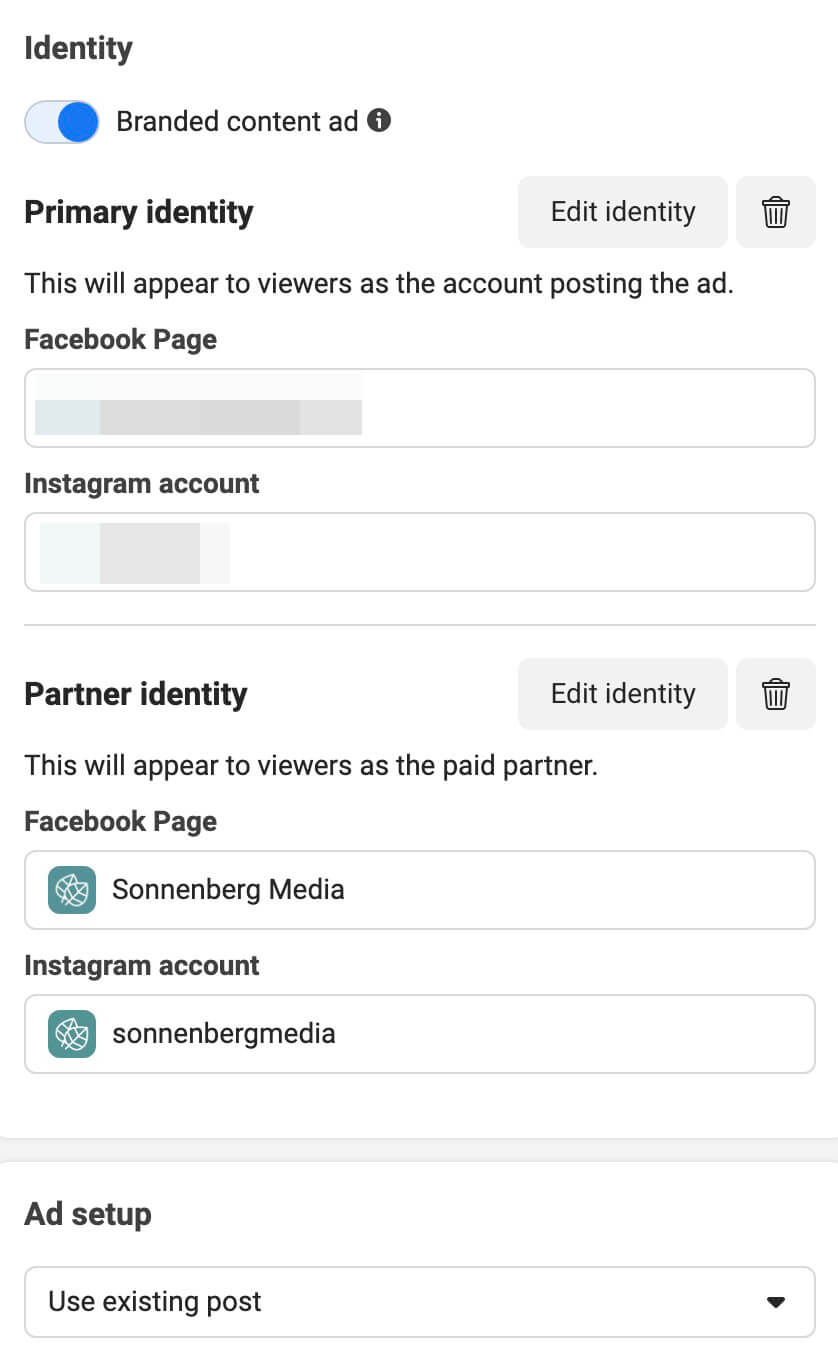
Before launching your ad, make sure you have permission to use the UGC for advertising purposes (rather than just sharing organically). Depending on the platform, it’s often easiest to use native advertising features like Meta’s branded content tool, which lets you use the creator’s original post as the creative asset.
Conclusion
Because of its genuine nature, UGC is ideal for showing your audience what customers really think about your brand and how they actually use your products and services. With a well-planned UGC strategy, you can source, share, and amplify the most effective types of content and effectively leverage UGC for your brand.
Stay Up-to-Date: Get New Marketing Articles Delivered to You!
Don't miss out on upcoming social media marketing insights and strategies! Sign up to receive notifications when we publish new articles on Social Media Examiner. Our expertly crafted content will help you stay ahead of the curve and drive results for your business. Click the link below to sign up now and receive our annual report!
Attention Agency Owners, Brand Marketers, and Consultants

Introducing the Marketing Agency Show–our newest podcast designed to explore the struggles of agency marketers.
Join show host and agency owner, Brooke Sellas, as she interviews agency marketers and digs deep into their biggest challenges. Explore topics like navigating rough economic times, leveraging AI, service diversification, client acquisition, and much more.
Just pull up your favorite podcast app, search for Marketing Agency Show and start listening. Or click the button below for more information.

